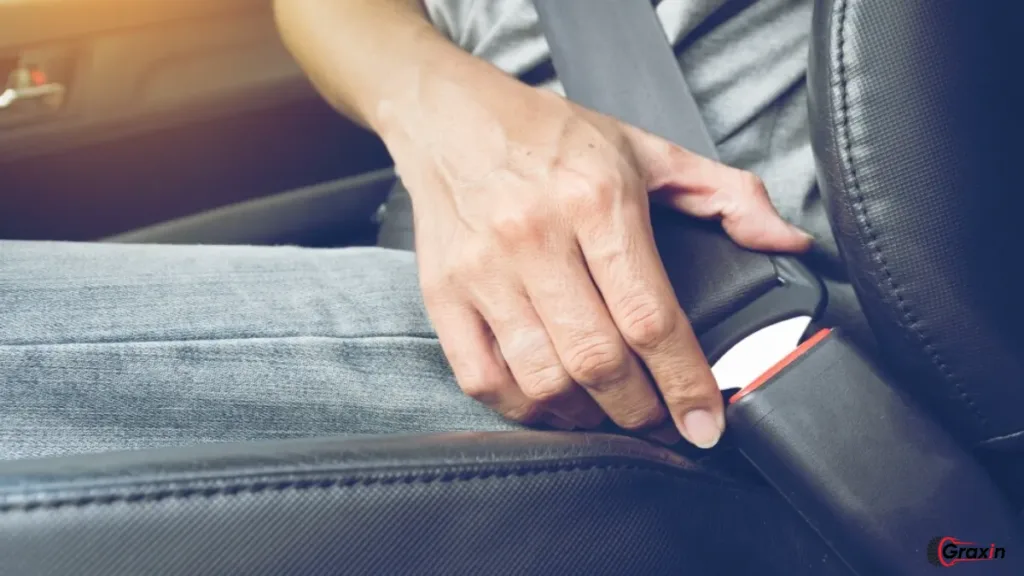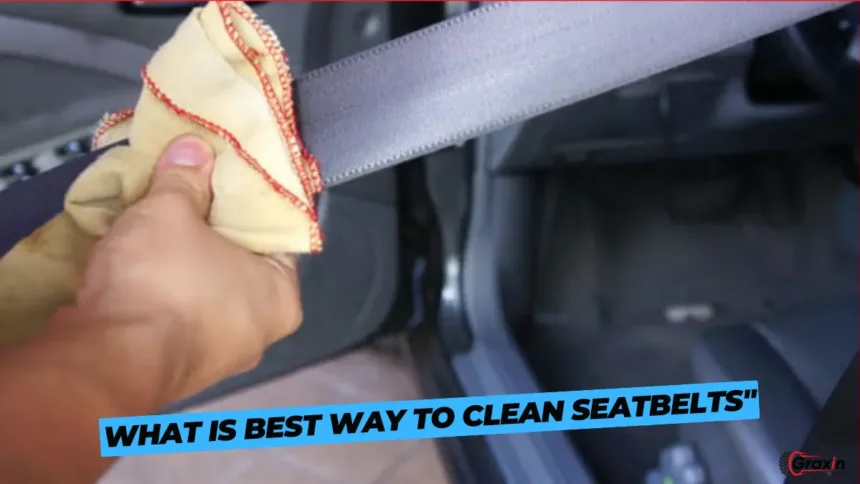Car cleaning is so much more than just vacuuming the floors or wiping the dash. Often overlooked but very important to car care is how to clean your seatbelt. These strips of fabric keep us safe on the road, yet they are picking up dirt, stains, and germs over time. What is the best way to clean seatbelts without damaging them? Now, here’s a pretty simple step-by-step on how to clean your car’s seatbelt both safely and correctly. Okay, let’s get started!
Introduction
Seatbelts are quite important to the safety of the vehicle; they restrain one during travels. However, apart from the necessary safety features, the seatbelts do get dirty as time elapses with general usage, such as drips of coffee, sweat from long drives or just generally dust settling around them, therefore cleaning them often will ensure they work well and improve the inside cleanliness of your vehicle.
Cleaning a seatbelt, however, is far from scrubbing with any cleaner. Seatbelts are made of special material built to withhold greater tension and strain. Scrubbing it wrongly may ruin the integrity of the seatbelts, and in case of an accident, they will prove ineffective. Let’s get more into the best methods of cleaning seatbelts safely and effectively.
Why Cleaning Seatbelts is Important

Safety Concerns
Seatbelts are designed for saving lives. Dust and stains hardly cause too many problems, but any material damage does compromise the seatbelt’s effectiveness when it is time to crash. It is always a good idea to clean seatbelts so they are intact.
Aesthetic Reasons
A dirty seatbelt might ruin the interior of your car. It may be able to soak deep into stains in your seatbelt that is just gross and unsanitary. Clean seatbelts keep your vehicle looking nice.
Understanding Seatbelt Material
Types of Materials Used in Seatbelts
Most seatbelts are composed of polyester. Polyester is a very rugged material, designed to withstand tearing and being pulled apart. Knowing the composition of the material will decide which method for cleaning is best. Polyester is quite hardy, but rough chemicals or scrubbing can still damage it.
Common Stains Found on Seatbelts
From greasy fast food to spilled drinks, seatbelts can collect a variety of stains. These stains can be challenging to remove if not treated promptly.
Preparation Before Cleaning
Gathering the Necessary Tools
Before starting, make sure you have the following:
- Mild soap or detergent
- Soft-bristled brush
- Microfiber cloth
- Spray bottle
- Warm water
Checking for Manufacturer Instructions
Always check your car’s owner manual or manufacturer guidelines to ensure you’re not using any cleaning methods that could void your warranty or damage the seatbelts.
The Best Ways to Clean Seatbelts

Method 1: Using Soap and Water
Some of the pretty easy ways to clean a seatbelt include mild soap and water. Mix a small amount of the soap with warm water in a spray bottle, spray it on the stained area, and scrub gently.
Method 2: Vinegar and Baking Soda Solution
For tougher stains, a combination of vinegar and baking soda works wonders. Spray vinegar onto the seatbelt, sprinkle baking soda, and let it fizz before scrubbing away the dirt.
Method 3: Commercial Seatbelt Cleaners
If you want a no-fuss option, several commercial cleaners are specifically designed for seatbelts. These products are formulated to be tough on stains but gentle on the fabric.
Step-by-Step Guide: Cleaning Seatbelts
Step 1: Pull Out the Seatbelt
Fully extend the seatbelt, so you can clean the entire surface.
Step 2: Apply Cleaning Solution
Spray your chosen cleaning solution onto the stained areas. Be careful not to soak the seatbelt, as excessive moisture can lead to mold or mildew.
Step 3: Scrub Gently
Using a soft-bristled brush, gently scrub the seatbelt to remove dirt and stains. Avoid using too much force, as it can weaken the fabric.
Step 4: Rinse and Dry
Wipe down the seatbelt with a damp microfiber cloth to remove any residue. Then, let it air dry completely before retracting it back into place.
Avoiding Common Mistakes
Using Harsh Chemicals
Never use bleach or other harsh chemicals, as they can weaken the seatbelt fibers and cause discoloration.
Over-Soaking the Seatbelt
Too much water can lead to mold and mildew inside the seatbelt retractor. Always use minimal moisture and ensure the seatbelt is thoroughly dried.
How Often Should You Clean Seatbelts?

Ideally, you should clean your seatbelts every few months or whenever you notice stains. Regular cleaning helps maintain both appearance and functionality.
Dealing with Stubborn Stains
Grease Stains
Use a degreaser or dish soap to tackle grease stains. Apply it directly to the stain, let it sit for a few minutes, and then scrub gently.
Food and Beverage Stains
For food or drink spills, blot the stain as soon as possible. Use a mixture of soap and water, then follow up with vinegar for any remaining discoloration.
Can You Use a Steam Cleaner on Seatbelts?
While steam cleaning can be effective for deep cleaning carpets and upholstery, it’s not recommended for seatbelts. The high heat can weaken the seatbelt material over time.
Maintaining Seatbelt Longevity
Regular cleaning, using the right products, and avoiding harsh treatments will keep your seatbelts in good condition for years. Make sure you address stains promptly to avoid long-term damage.
Cleaning Child Safety Seatbelts
Child seatbelts can also get dirty, especially with food and drink spills. The same cleaning methods apply, but be extra gentle to ensure the material remains intact for your child’s safety.
Safety Precautions While Cleaning Seatbelts
Always use mild cleaning solutions and avoid any methods that could degrade the seatbelt’s strength. Test the cleaner on a small area first to ensure it doesn’t cause discoloration or damage.
Conclusion
It is not really very difficult work to do on your seatbelts, but practically it is an aspect of necessity for safety and aesthetics. With the right technique and a spot of elbow grease, you’ll be keeping the seatbelts fresh and usable for years on end, really. Ensuring maintenance is helpful in keeping your vehicle clean and safe.
FAQs
- Can I use a pressure washer to clean seatbelts?
No, pressure washers can damage the seatbelt’s material, reducing its effectiveness. - What’s the best cleaner for seatbelts?
A mild soap and water solution works best for general cleaning, while vinegar and baking soda are ideal for tougher stains. - How often should I clean my seatbelts?
Every three to six months is ideal, but it depends on how dirty they get. - Can I use bleach on seatbelts?
No, bleach can weaken the fabric and cause discoloration. - What should I do if my seatbelt has mold?
Use a vinegar solution to remove the mold, but avoid soaking the seatbelt. Let it dry completely afterward.
Also Read : Can a Weak Battery Cause a Low Idle? Unveiling the Connection







